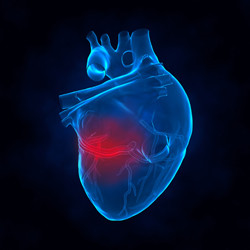Scaffolds for heart tissue engineering
Successful treatment of cardiovascular disease is often limited by the lack of suitable tissue to restore injured cardiac muscle, heart valves or diseased vessels. Developing improved prosthetic materials for treating cardiovascular diseases is both an ambitious and rewarding task. The European large-scale collaborative project BIOSCENT(opens in new window) was conducted by a consortium of regenerative medicine and tissue engineering experts. The overall objective was to develop multifunctional bioactive polymer scaffolds capable of guiding cardiovascular tissue formation from adult stem cells. The 5-year project included 15 partners from both industrial and research institutions. BIOSCENT aimed at regeneration of all three cardiovascular tissues: myocardium, blood vessels and heart valves. Two approaches were explored in the course of the project. In a more traditional in vitro tissue engineering approach, the stem cells were cultivated on a polymer scaffold and then implanted as a prosthesis. Alternatively, the in situ tissue engineering approach used implanted unseeded bioactive scaffolds to recruit patients' own stem cells and guide tissue regeneration. An in situ approach avoids the risk and difficulties associated with cell expansion, differentiation, organisation and biograft implantation. Four different types of scaffolds were designed for in vitro/in situ tissue engineering: cardiac patch and cardiac injectables for myocardium, vessels and heart valves. For each type of scaffold, polymers, stem cell sources and signals to guide tissue regeneration were integrated to result in bioactive prototypes. A total of 48 prototypes were tested in vitro. The best proceeded to in vivo testing: five for the cardiac patch, three for cardiac injectables, five for heart valves and four for blood vessels. The results of in vivo tests were very promising, especially for the cardiac patch and cardiac injectables. The research needs to continue with prototype fine-tuning and in vivo tests on large animals in order to be ready, in 3 to 5 years, for the first implant in man.







